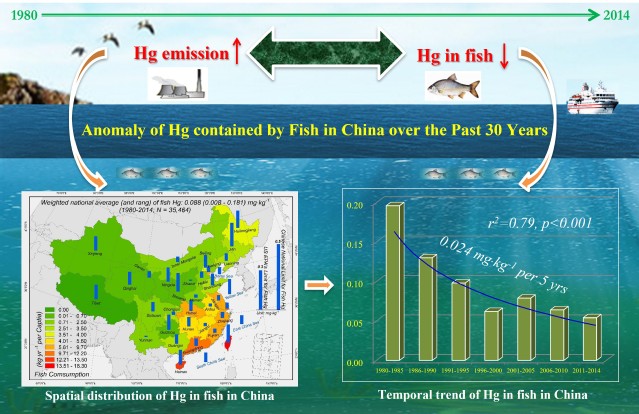

Highlight:
This article presents a meta-analysis of Hg levels in fish in the world’s largest fish producing and consuming country, China.
Temporal and spatial variation of fish Hg levels in Chinese inland and coastal waters over the three decades are displayed.
The fish Hg in China did not increase but decreased with the increase of Hg emission.
Overfishing and aquaculture may play an important role in controlling the Hg content of fish in China.
Abstract: Fish consumption is the primary dietary route of human exposure to methylmercury. It has been well documented that elevated mercury concentration in fish in North America and Europe is linked to anthropogenic mercury emissions. China is the world’s largest producer, consumer, and emitter of mercury, as well as the world’s largest commercial fish producer and consumer. Although mercury pollution in fish in China is currently receiving much attention worldwide, its status remains largely unknown. Here, we conducted a meta-analysis on total mercury concentrations in marine and freshwater fish samples, covering 35,464 samples collected in China over the past 30 years. It is found that, opposite to the increasing emission and documented mercury contamination events, mercury levels in fish have gradually decreased in China over the past 30 years. The results were in sharp contrast to those found in North America and Europe. The mercury concentrations in fish were significantly anticorrelated with the fish catch, fish aquaculture, and were inverse to trophic levels. Overfishing and the short lifecycle of aquaculture fish, both reducing the trophic level and the duration of mercury accumulation, were the most likely causes leading to the decline of mercury concentrations found in fish in China.
Keywords: Meta-analysis; Mercury; Fish; Spatial-temporal variability; Freshwater and marine waterbodies; China
DOI: 10.1016/j.eehl.2022.04.002